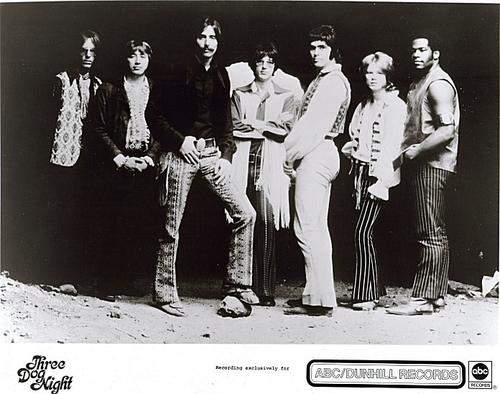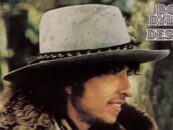 Some memorable classic rock hits dominated the Top 10 on Los Angeles’ KHJ radio in September 1972. But the lower part of the survey is also notable for some huge chart hits by several all-time greats.
Some memorable classic rock hits dominated the Top 10 on Los Angeles’ KHJ radio in September 1972. But the lower part of the survey is also notable for some huge chart hits by several all-time greats.
Bubbling under at #29 was Elvis Presley‘s “Burning Love.” The song would ultimately peak nationally at #2, his final Top 10 U.S. single.
Rick Nelson‘s “Garden Party,” written in response to his being booed for the Madison Square Garden stage a year earlier, debuted at #25. It would eventually reach #6, also marking his final Top 40 hit.
The O’Jays‘ classic “Back Stabbers” jumped from #24 to #20 (on its way to #3).
The hits just keep on coming! At #18 (up from #26) was Rod Stewart‘s “You Wear It Well.” And at #17: Leon Russell‘s “Tight Rope,” (from #21).
The Raspberries‘ biggest hit, “Go All The Way,” jumped from #18 to #14. It would peak at #5 nationally.
Argent’s signature hit “Hold Your Head Up” was at #9 and was the only charting single they ever had in the U.S.
The Moody Blues’ “Nights In White Satin” took a huge jump from #14 to #8 on its way to #2 on the Billboard Hot 100 to become their highest-charting single. (The song was originally released in 1967 and is featured in Best Classic Bands’ feature, 10 Re-Released Songs That Became Hits.)
At #5, “Honky Cat” was the third in a phenomenally successful string of 15 Top 10 singles in six years for Elton John.
Gilbert O’Sullivan‘s huge hit “Alone Again (Naturally)” was at #4, following six weeks at #1. (It was the year’s #2 biggest hit.)
Chicago was at #2 with “Saturday In The Park,” their highest charting hit up to that point in their career although it stalled nationally at #3. (No need to shed a tear: they ultimately enjoyed three songs that went to #1 among their 21 Top 10 singles.)
Meanwhile, Three Dog Night were also in the midst of a stretch of chart dominance: “Black And White” was one of nine Top 5 hits they charted from 1969-73.
Did you know that “Black And White” was written in 1954 in reaction to the landmark U.S. Supreme Court decision, Brown v. Board of Education, which banned racial segregation of public schools?
Related: The top radio hits of 1972
25. “Garden Party” – Rick Nelson (Decca)
20. “Back Stabbers” – The O’Jays (Phila. Intl.)
18. “You Wear It Well” – Rod Stewart (Mercury)
17. “Tight Rope” – Leon Russell (Shelter)
14. “Go All The Way” – The Raspberries (Capitol)
10. “I’m Still In Love With You” – Al Green (Hi)
9. “Hold Your Head Up” – Argent (Epic)
8. “Nights In White Satin” – The Moody Blues (Deram)
7. “You’re Still A Young Man” – Tower Of Power (Warner Bros.)
6. “Beautiful Sunday” – Daniel Boone (Mercury)
5. “Honky Cat” – Elton John (Uni)
4. “Alone Again (Naturally)” – Gilbert O’Sullivan (MAM)
3. “Play Me” – Neil Diamond (Uni)
2. “Saturday In The Park” – Chicago (Columbia)
1. “Black And White” – Three Dog Night (Dunhill)
- David Lee Roth Announces 2026 Tour - 01/05/2026
- Thin Lizzy’s ‘The Boys Are Back in Town’: Them Cats Are Crazy - 01/04/2026
- Radio Hits of January 1965: British Invasion - 01/03/2026






8 Comments so far
Jump into a conversationMy two favorite songs of 1972 weren’t on this list
Dancing in the Moonlight
City of New Orleans
the multi-faceted amazing array of tunes… it’s sweet & both of your choices are good eXamples.
For Frank S., “Dancing in the Moonlight” didn’t hit the Hot 100 until October of ’72, and didn’t hit its peak until early ’73.
With the exception of “Honky Cat” the first six are pretty hokey. Can’t believe that wonderful Tower of Power song reached that high. Otherwise, the list seems to get better as it gets higher.
Tower of Power is an outstanding group still making music and touring.
It would be great if the Best Classic Band staff would create a Spotify Playlist, and provide a link, to complement these excellent articles! The videos are nice, but a playlist would give your readers another option for enjoying the songs featured in the article if they prefer a listening-only experience while working, driving, exercising, and other activities.
And to further add to “Black & White” by 3 Dog Night, not only was it an 18-year old song written in the aftermath of that Supreme Court decision, it was co-written by Alan Arkin’s father.
One song missing from the (incomplete top 25) list is Chuck Berry’s “My Ding-a-Ling”, nominally known as His Only Number 1®.
I listened to multiple Top 40 radio stations back then. I NEVER heard it. And the station that had American Top 40 would cut it out of the shows – such as the one that ran this week in 1972, where the song was in the teens and moving up.